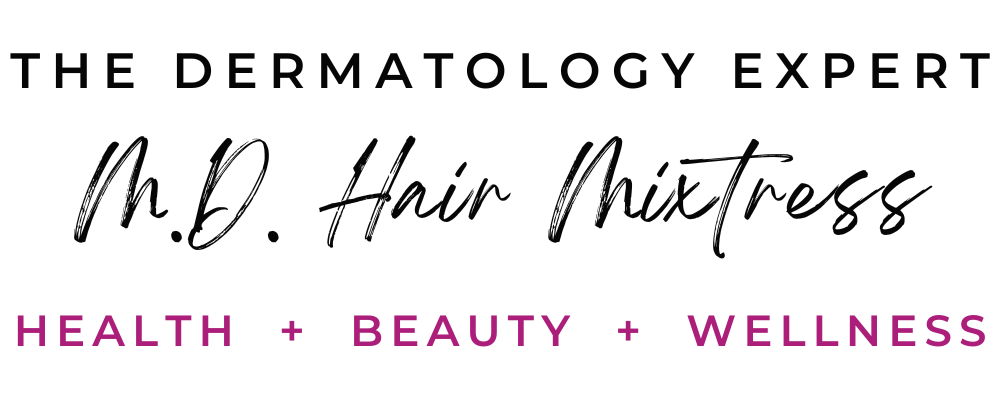“My face always feels dry after washing, and moisturizers only keep it smooth and hydrated for a short amount of time. Are there any ingredients in face washes and moisturizers to look out for?”
What Skin Product Ingredients Should I Avoid?
Your skin is your body’s largest organ, and it’s a window into your well being and health. Choosing the right skin cleansers and moisturizers can be tricky. There are literally thousands of products on the market, and it’s important that you be aware of what skin product ingredients to avoid. From fragrances to preservatives, there are several skin product ingredients to avoid or be cautious with.
7 Potentially Harmful or Irritating Skin Product Ingredients:
1. Sodium Laurel Sulfate (SLS)
SLS is a chemical called a surfactant, and is used as both a cleansing and foaming agent. SLS helps give that rich lather that most of us used to associate with getting clean. Unfortunately, SLS can be very drying and irritating to the skin. It can give skin an uncomfortable and tight feeling, and can make your skin more dry.
2. Parabens
Parabens are chemicals that are used as preservatives to prevent nasty molds and bacteria from growing in your skin care products. Parabens are controversial, but there is some evidence that they may be disruptive to the endocrine (hormone) system and potentially cause problems with reproduction and development.
3. Synthetic Colors
Ever wonder what FD&C Red was? The ‘F’ in FD&C represents food, and the ‘D&C’ represents drugs and cosmetics. FD&C is followed by a color and a number. These man made colors are typically derived from petroleum or coal tar sources, and have been controversial because some feel there may be linked with childhood hyperactivity. Most of the concerns appear to be around synthetic colors used in food additives, and a definite association with hyperactivity disorder has not been proven.
If you’re concerned about synthetic colors, there are some natural options for coloring products, including beet, turmeric, and annatto. Tula’s Probiotic Face Filter Blurring and Moisturizing Primer contains turmeric, and other good-for-your-skin ingredients like licorice extract.
4. Formaldehyde
Formaldehyde is a preservative that’s used to prevent bacteria in cosmetic products. You’ve probably heard that formaldehyde isn’t good for you. But formaldehyde can also go by different names that you need to be aware of. Other names for formaldehyde releasers include:
- quaternium-15
- DMDM-hydantoin
- imidazolidinyl urea
- diazolidinyl urea
Formaldehyde is a known carcinogen (can cause cancer), and is also a frequent skin irritant.
5. Fragrances
When you see the word “fragrance” on the ingredient list of your favorite products, you really have no idea of what that means. Companies might use the word ‘fragrance’ to protect their trade secrets. Fragrance and fragrance mixes can cause allergies, rashes and also can potentially cause respiratory problems in some people. In fact, fragrances are a leading cause of sensitivity to cosmetic products.
6. Phthalates
Phthalates are a group of chemicals that are used in skin product ingredients to increase the flexibility and softness of products. They can be found in nail polishes and skin moisturizers and lotions. Phthalates have been implicated to be endocrine (hormone) disrupters. Phthalates go by different names: dibutyl phthalate in nail polish, diethyl phthalate in perfumes and lotions, and dimethyl phthalate in hair products. One study linked phthalates to breast cancer, and it has also been linked to reproductive and developmental issues. Phthalates can also show up in fragrances. This can be tricky though, since fragrance ingredients may not be listed if they are a protected ‘trade secret’. So you wouldn’t really know if a phthalate is in your fragranced product!
7. Mercury
A lot of us know that mercury is bad, but unfortunately, it still shows up in some beauty products. Mercury may be found in some antiaging, fading creams and skin bleaching creams. While mercury is not used in products here in the US, it may be found in products from places like Africa, Asia, and India, where regulations are different. If you’re looking at a label on a fade cream or bleaching cream, you may not see the word ‘mercury.’ Mercury can also be disguised as: “mercurous chloride,” “calomel,” “mercuric,” or “mercurio” on the label. Mercury poisoning can lead to symptoms like depression, irritability, tremors and developmental problems. Check out this information from the FDA for more information on mercury in skin care products.
If you’re looking to lighten dark spots and need a bleaching cream, you should check out a product like Ambi Fade Cream. If you’re trying to avoid hydroquinone in your bleaching creams, as it can be controversial for some, you can also look for fading creams with ingredients like kojic acid and licorice that can be helpful at evening out your skin.



